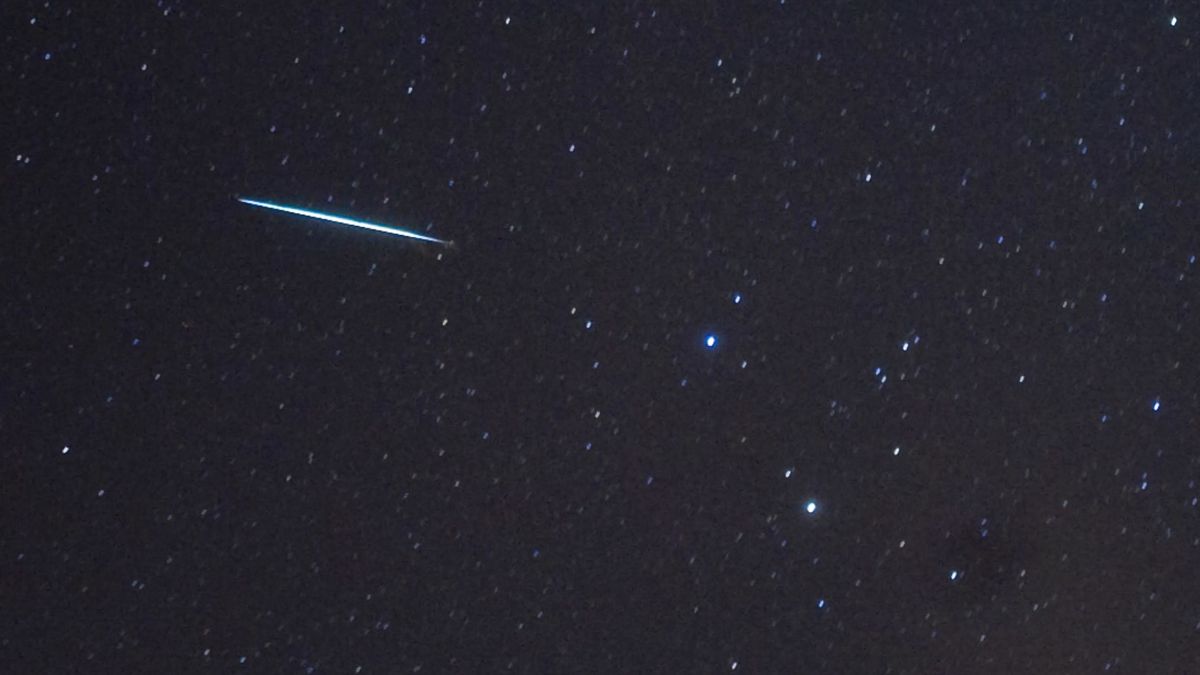
Meteorites that formed in the earliest days of the solar system may contain liquid water, according to new research, lending credence to the theory that meteorites brought water and other precursors for life to our planet billions of years ago.
Carbonaceous chondrites are a special group of meteorites that trace their origins back to the formation of the solar system. When pieces of them are found on Earth, they’ve been found to contain tantalizing shreds of information, like minerals that only appear in the presence of water and organic compounds like amino acids—some of the building blocks of life.
As a result, carbonaceous chondrites have become a leading candidate for how water ended up on Earth. A great way to know for sure would be if a chondrite—which, though rare among their fallen meteoritic compatriots, still do impact on Earth with regularity—came to ground with water on it, and we were lucky enough to spot the rock and recover it.
That’s a tall order. The asteroid Ryugu was recently found to have been water-dry for a long, long time before Japan arrived there with its Hayabusa2 spacecraft. Until now, scientists have been aware that fluid flow happened on carbonaceous chondrites at some point, but they haven’t known how recently that flow may have occurred. Previous dating methods showed water was present on these rocks early—around 4.5 billion years ago, shortly after Earth formed.
“That all leads to the hypothesis that any alteration, and any presence of water, was very ancient. So our test was to say, could there have been young alteration?” Simon Turner, an isotope geochemist at Macquarie University in Sydney, Australia, said in a video call. “I.e., there’s still ice on these meteorites.” Turner is lead author of a new paper describing liquid flow in carbonaceous chondrites, published this week in the journal Scientific Reports.
G/O Media may get a commission
A team of researchers from Macquarie University, Florida State University, and the Natural History Museum of Paris have found that these carbonaceous chondrites had some amount of fluid in the past few hundred thousand years—very recently, as far as space and geologic timescales go.
All meteorites fall, but only those that are witnessed falling are called “falls” thereafter. Turner’s team only used carbonaceous chondrite falls in their research, because those fresh-from-space rocks have a clear timestamp on when they arrived and context for what they came into contact with on Earth (i.e. what they might be contaminated with). The meteorites included in the study came from all over: One was from Sutter’s Mill, where the California Gold Rush kicked off, while another landed on a frozen lake in Russia, among many other sites around the world.
The research team took samples from these space rocks and dated their water flow with uranium-thorium dating, in which isotopes of the two elements can be measured to discern age. In this case, the question was not the age of these meteorites themselves, but the age at which liquid was moving within the rock. Uranium is very mobile in fluid, while thorium is not, so by seeing when the uranium moved within the meteorite relative to the thorium, the team could deduce when the water swished around.
“If there was ice on the bodies, and if there was a reason that ice melted and moved, and it occurred within the last million years, you should expect differential behavior of uranium and thorium,” Turner said.
In other words, when liquid is flowing, whether on a space rock or along a riverbed, it shifts isotopes around, leaving a short-term record of the flow. That signature disappears if too much time elapses. If the isotopes moved within a million years, specifically, the team would detect that disruption.
The recentness of the liquid movement found in some of the team’s samples is exciting—it means carbonaceous chondrites may very well still contain ice, if they had flowing liquid as recently as a few hundred thousand years ago.
Edward Young, a geochemist at UCLA who was not affiliated with the recent paper, said in an email that the new research was “very interesting” and “elegant.” He noted that other scientists have just recently learned about widespread water flow on the asteroid Bennu, thanks to NASA’s ongoing OSIRIS-REx mission.
A next step would be to test space rocks that didn’t fall as a fireball through Earth’s atmosphere, a violent process that obscures exactly how ice on these asteroids melted (samples brought by a spacecraft would be useful). In the meantime, researchers will poke around with the fallen space rocks, keeping an eye on the sky for new evidence that may come crashing down.
This article is auto-generated by Algorithm Source: gizmodo.com


